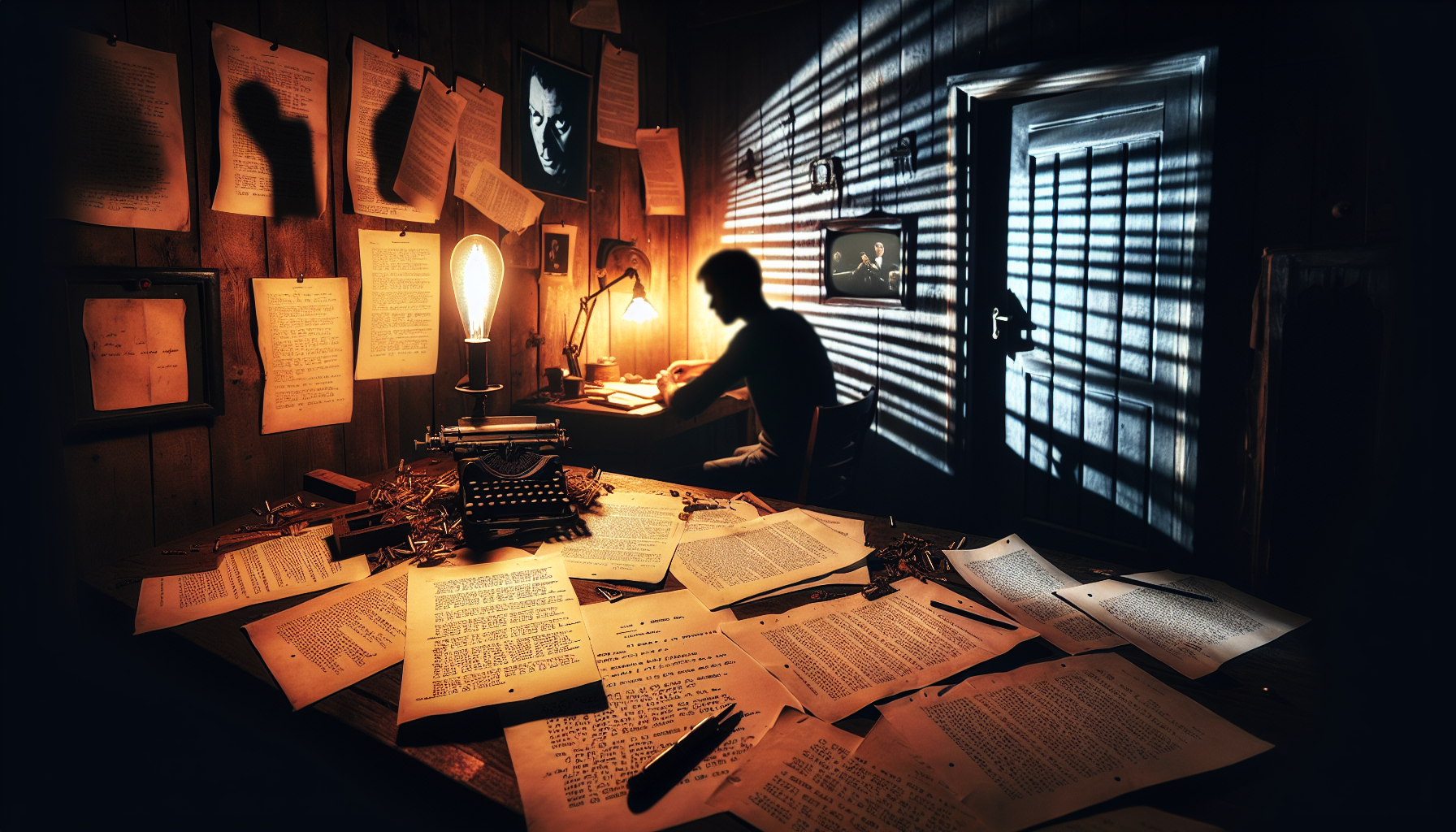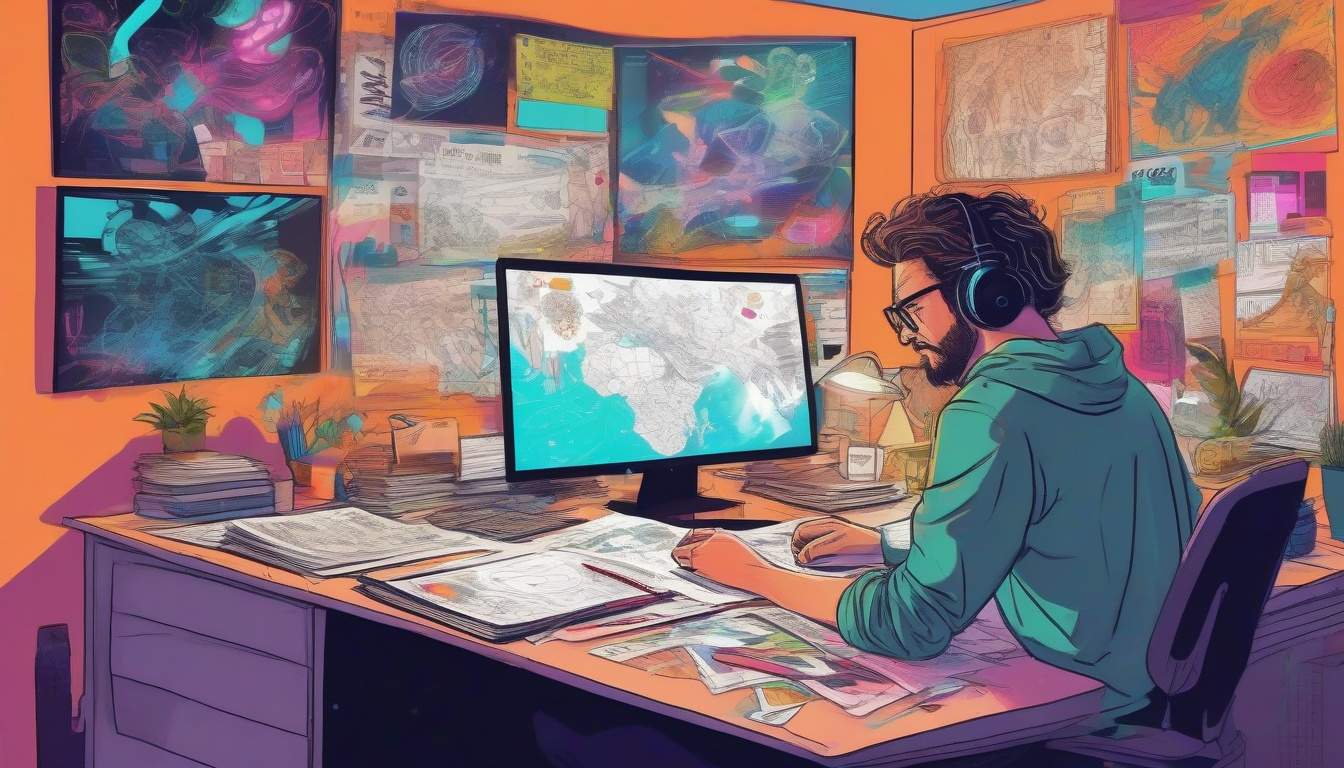
Delicious Dread: The Devilish Art of Crafting Psychological Horror in Screenplays
Oh, the sweet, spine-chilling thrill of a well-crafted horror film! It’s like a rollercoaster for your brain: thrilling highs, terrifying lows, and that lovely loop-de-loop of suspense that keeps you clutching your popcorn like a life preserver. But what’s the secret sauce? How do screenwriters concoct a story that not only scares the pajamas off you but also burrows deep into your psyche and sets up camp there? Welcome to the eerie world of psychological horror, where the true monsters are oftentimes not the ones under your bed, but the ones lurking in the dark corners of your mind.
Peekaboo with the Subconscious: Establishing a Connection
First things first, let’s forge a bond, dear audience. The most potent psychological horror strikes chords with personal, universal fears – abandonment, loss, identity crisis, you know, the usual existential dread buffet. By weaving relatable characters and motivations, screenwriters can create an emotional hook that pulls viewers deeper into the narrative. You’re not just watching a character’s journey; you’re practically wearing their shoes, feeling every ominous crack of the floorboard in high-definition anxiety.
Making the Unknown the Unseen
What’s scarier than seeing a ghost? Not seeing the ghost, but knowing it’s there, breathing cold air down your neck! Humans fear the unknown, and by exploiting this, screenwriters can supercharge a screenplay. It’s all about the tease; never show your full hand, or in this case, the full monster. Their unseen presence can be more terrifying than any creature design or prosthetic makeup. If your audience is filling in the blanks with their worst nightmares, then you, my terrifyingly talented friend, have mastered the art of invisible ink.
The Slow Creep: Pacing and Atmosphere
A psychological horror script doesn’t need to hurl ghosts and ghouls from page one. Instead, think of it like brewing a sinister cup of tea. Let it steep. Build atmosphere through setting, mood, and tantalizingly slow reveals. This maddening pace allows the audience’s mind to race ahead, imagining far worse horrors than what’s merely suggested on the screen. Use your narrative tempo to exacerbate tension and prolong discomfort. It’s about making them squirm in their velvet cinema seats, remember?
Echoes of the Mind: Sound Design
Silence, whispers, the sudden clatter – sounds are the unsung heroes of spine-chilling horror. They can be orchestrated to manipulate the viewer’s heartbeat. Screenwriters should suggest psychoacoustic elements into their scripts – faint whispers, an untraceable thumping, a lullaby that’s just a tad too slow. These elements can be scripted to ensure that the viewer’s anticipation of terror is just as horrifying as its realization.
Flickering Shadows: The Power of Lighting
Like a seasoned puppeteer, a good horror screenwriter knows how to play with lighting to cast shadows of doubt and fear. Low lighting, flickering lights, or an unnatural glow can unsettle and disorient the audience, perfectly complimenting the psychological torment of the protagonist. Describe these elements in your screenplay to suggest more than what meets the eye, hovering ever so subtly in the dimly lit corners of your scenes.
The Monster Within: Use of Reflections and Mirrors
Now, let’s get metaphysical. Mirrors not only add depth to your visual palette but also reflect the inner chaos of your characters. They can distort reality, question perception, and reveal terrains of the mind previously unexplored. A character’s interaction with their reflection can reveal internal conflicts and can be an eerie metaphor for self-confrontation. It’s like saying, Watch out! The enemy might just be you! But, y’know, with more subtlety.
Utilizing these psychological elements can transform a scream-worthy script into a nuanced labyrinth of fear that entices, engages, and ensnares the psyche of its viewers. So go ahead, dip your quill into the nightmarish inkwell of human fears and craft a screenplay that not only jumps scares but also creeps hauntingly into the dreams of your audience!






